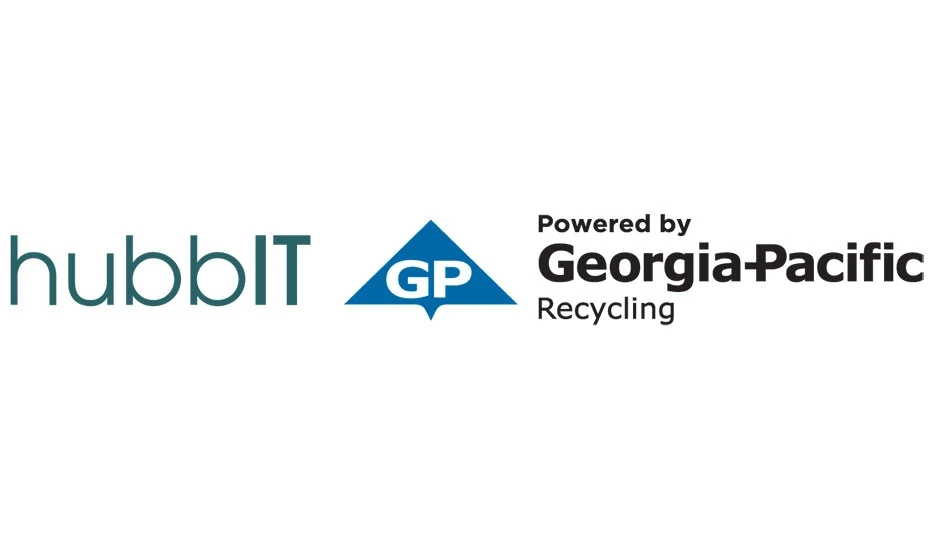
Comprehensive Safety Analysis (CSA) 2010 is a new program that the Federal Motor Carrier Safety Administration (FMCSA), a division of the Department of Transportation (DOT), has introduced in an effort to further reduce commercial vehicle crashes, fatalities and injuries on U.S. highways.
According to the FMCSA, CSA 2010 “introduces a new enforcement and compliance model that allows FMCSA and its state partners to contact a larger number of carriers earlier in order to address safety problems before crashes occur.”
The CSA 2010 process began in 2004, when FMCSA began looking for a way to extend its limited resources and personnel while reaching out to more trucking operations, says Tom Herod, director of transportation safety for the Institute of Scrap Recycling Industries Inc. (ISRI), Washington, D.C. “The idea was they were going to focus more attention on individual driver behaviors, which often are predictors of big truck crashes,” he says.
For recycling companies with commercial trucks on the road, the changes under CSA 2010 will be significant and potentially confusing, which is why ISRI has been conducting a number of Fleet Management Essentials and CSA 2010 Enforcement seminars around the country in an effort to inform its members of what is to come, Herod says.
“Recycling companies end up being trucking companies too, whether they like it or not,” he says. “It is just a necessary part of the business.”
While Herod says larger scrap recycling companies such as Sims Metal Management and OmniSource can employ dedicated fleet managers, such companies make up only 10 to 15 percent of ISRI’s membership. “The rest of the guys have 50 to 60 trucks to as few as three or four trucks, and they are the ones that really need our help the most.”
Under CSA 2010, individual drivers will be subject to more scrutiny, Herod says, “whereas, all of the enforcement tools in the past typically have only been against the carrier, the driver’s employer. That is a dramatic change.”
In the following Q&A, Herod briefs Recycling Today’s readers on what CSA 2010 will mean for them.
Recycling Today (RT): What are the goals of the CSA 2010 initiative?
Tom Herod (TH): The goal of CSA 2010 is to be able to contact more of the regulated population. Currently there is an online system that FMCSA operates called SafeStat, which is a database of all registered motor carriers’ safety rating scores that are based on out-of-service violations to their drivers and vehicles.
In the past, a motor carrier’s score was based only those violations that led to the truck being taken off the road or the driver being taken off the road. There was a point calculation that was used to create the score against this carrier, which is completely public record. They are ranked by percentile. Any carrier that has a score that is greater than 75, that is a bad thing and that suddenly creates a red flag and it makes that carrier a target for an on-site comprehensive review.
Two or three DOT officers will come to your facility and will review and audit every aspect of your fleet operations and driver safety. Given that FMCSA’s resources are limited, historically they have only been able to reach out to 2 percent of the total trucking operations in the country.
Part of CSA 2010 and the way that FMCSA is going to start reviewing drivers and their behaviors, their thought process is that they can have contact directly with many more carriers through this new system and, therefore, maybe they can increase the continuing reduction in driver related accidents, crashes and fatalities.
The next part of it is that they are going to change their method of contacting carriers. Rather than waiting for a comprehensive review on site, which happens infrequently, they are going to starting sending out what they call “intervention” letters. Anyone that currently has a SafeStat score of about 75 will, starting the first of the year, receive these intervention letters. They are going to insist that the carrier prove to the FMCSA that they are doing something to improve their safe operations.
Officially what will happen is that this SafeStat scoring system that is online now will go away on Dec. 5, 2010. On Dec. 5, they will start using the CSA 2010 scoring system, which will include both the individual driver safety rating and the overall rating for the motor carrier.
Already people have tested the system and discovered that they will be subject to more scrutiny and that their scores will get worse based on the addition of the driver information.
Under the new system, when drivers are subject to a roadside inspection, the enforcement officers will evaluate the drivers based on the BASICs (Behavior Analysis Safety Improvement Categories), which are seven criteria (unsafe driving, fatigued driving, driver fitness, controlled substances and alcohol, vehicle maintenance, cargo-related and crash indicator). They will give him a score under each one of these BASICs that will apply directly to the carrier’s score as well. It will include inspections that occur as the result of any moving violations, not just out-of-service violations, which was common up until now.
Under the new scoring system they are not starting from zero, they are automatically including all the violation history that a driver has during the last two calendar years.
RT: Are the individual drivers’ scores for a carrier averaged to arrive at the carrier’s score? How does that work?
TH: They will make a weighted comparison with other carriers of similar size, the same number of power units and annual miles driven. The smaller guys, typically those with the fewest number of drivers, are the ones who are going to get penalized because even one on-the-road violation is going to upset their whole score.
RT: What is the time line for CSA 2010 implementation?
TH: Dec. 5, 2010, is when the CSA 2010 scoring system becomes live on their website (http://fmcsa.dot.gov) and the SafeStat system goes away.
In the past, the SafeStat system only evaluated carriers under four safety related areas, they were called SEAs (safety evaluation areas). Those were recordable accidents, out-of-service violations for maintenance of vehicles, drivers taken out of service as the result of not having a valid CDL (commercial driver’s license) or not having an up-to-date medical card and the safety evaluation, which was the result of an on-site inspection. It was really only those four criteria that ended up creating a carrier’s score under SafeStat. Now they are going into the seven BASICs. Each of these seven items will be used not only to evaluate the drivers but will also be the basis of the score that the carrier ends up receiving.
Dec. 5, 2010, is when the CSA scoring will become live. It is not until after the first of the year 2011 on a phased in schedule that will last throughout the entire year that enforcement will begin with drivers out on the road. Next year is when drivers are going to start to see enforcement activity based on the seven BASICs criteria and a more aggressive approach.
What most carriers need to be aware of, our members included, is that the first two of these seven BASICs are considered standalone BASICs. If a company has a drivers who have violations in the unsafe driving category, such as speeding, or a new [category] that is called fatigued driving, bad scores in these two areas alone could cause a carrier to lose their authority to operate a fleet. Period. You are off the road.
If a driver gets pulled over for a routine inspection on the road or at the scale and he has a clean, violation-free inspection, as long as the DOT officer does a written report in the computer system, it will actually end up reducing the driver’s and the carrier’s points; they will have a better score. You want an inspection with no violations because that will actually help you in the long run.
RT: What can recyclers do to be part of the CSA 2010 process?
TH: I think the big thing recyclers can do right now is go online to the current SafeStat system and verify that the scoring that is applied to their DOT number, their company, is accurate. Sometimes in the field a DOT enforcement officer may accidentally type in the wrong DOT number. DOT has a process to contest those violations or to try to get them removed if they are not applicable to their organization. That is called the DataQs system. I’m encouraging our members to do that right now. Make sure your record is accurate, because on Dec. 5, when it all switches over, it is entirely likely that your score will become worse because of these new criteria.
We are also trying to encourage them to spend more time having safety dialogues, conversations, with their drivers.
Recyclers need to start communicating with their drivers right now about the impact of this new driver evaluation system. The drivers should understand that if they continue to operate with little regard to compliance with the law or safety, they are going to end up with a lousy score that is going to stay with them for three years. If they try to jump ship or get employment somewhere else as a truck driver, this lousy score follows them.
Tom Herod is director of transportation safety for the Institute of Scrap Recycling Industries Inc. He can be contacted at tomherod@isri.org.
| TAKE ACTION |
Tom Herod, director of transportation safety for the Institute of Scrap Recycling Industries Inc. (ISRI), Washington, offers additional advice for recyclers regarding the Comprehensive Safety Analysis (CSA) 2010. CSA 2010 is a new program that the Federal Motor Carrier Safety Administration (FMCSA), a division of the Department of Transportation (DOT), has introduced in an effort to further reduce commercial vehicle crashes, fatalities and injuries on U.S. highways. Recycling Today (RT): Is there anything recyclers need to begin doing differently now to better adapt to any changes CSA 2010 brings? Tom Herod (TH): Yes. Pay more attention to your fleet operations. As I’ve been saying at our seminars, in the last few years as I’ve been traveling around to 50 or 60 of our members and spent time with their management teams or drivers, I’ve discovered that two things are very common: No. 1, senior level management simply is not directly involved in managing fleet operations or even in setting the tone, the expectation, and not holding people accountable. They need to start paying more attention to it. It is an essential part of their business, it is an important part of their business, and it has never had that kind of presence. Another thing that is very common is that in the past, our members didn’t pay much attention to the quality of the drivers they were hiring and retaining in the first place. Back in 2008, we created a guidance manual, the Transportation Safety Manual, that listed the 10 key elements to maintaining a compliant fleet operation. One of the first elements there was senior level management needs to be involved, needs to set tone and needs to reinforce their expectations with all of their people. If you are going to work for us, you need to do the following or you are not going to work here. That doesn’t happen enough. |

Explore the October 2010 Issue
Check out more from this issue and find your next story to read.
Latest from Recycling Today
- ReMA opposes European efforts seeking export restrictions for recyclables
- Fresh Perspective: Raj Bagaria
- Saica announces plans for second US site
- Update: Novelis produces first aluminum coil made fully from recycled end-of-life automotive scrap
- Aimplas doubles online course offerings
- Radius to be acquired by Toyota subsidiary
- Algoma EAF to start in April
- Erema sees strong demand for high-volume PET systems





